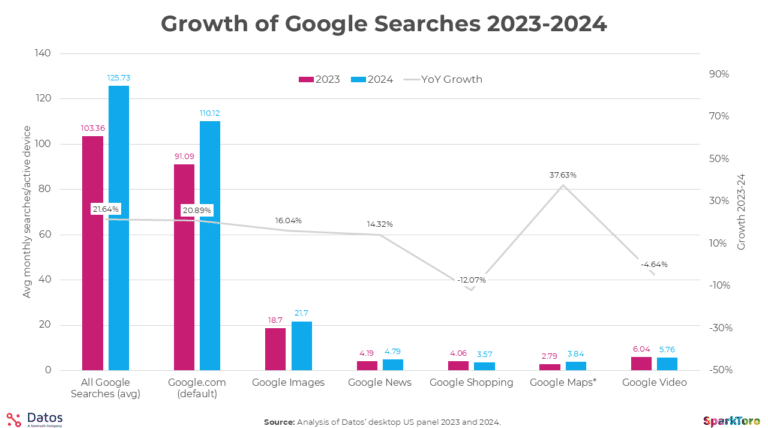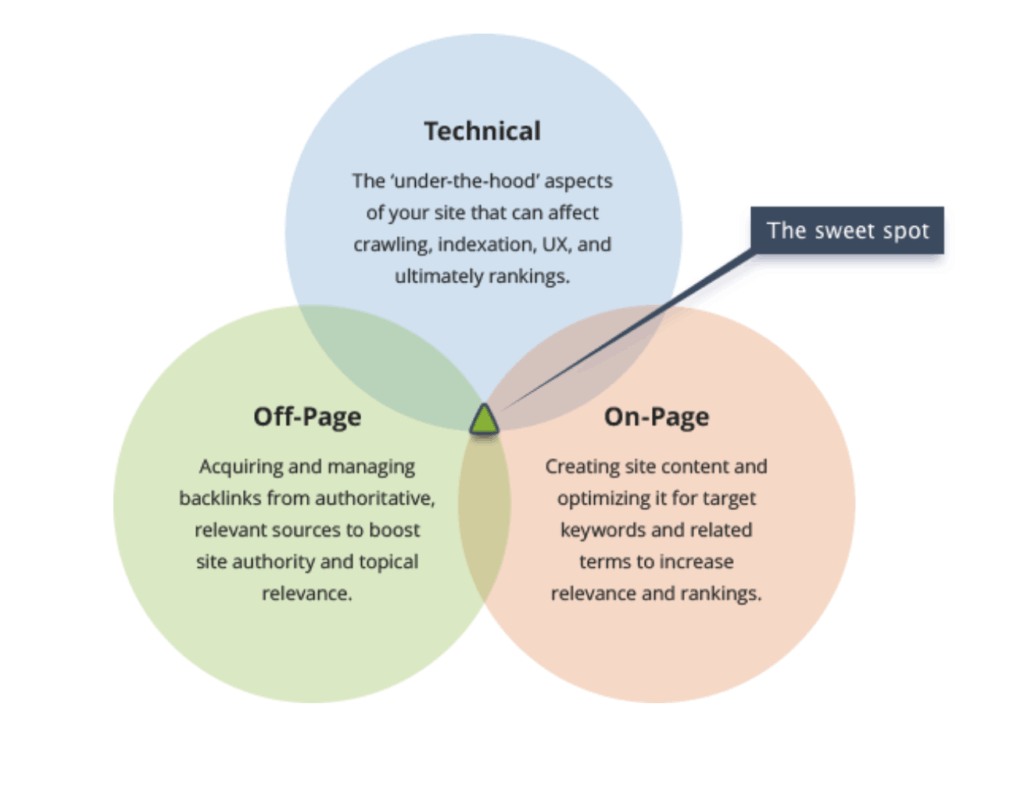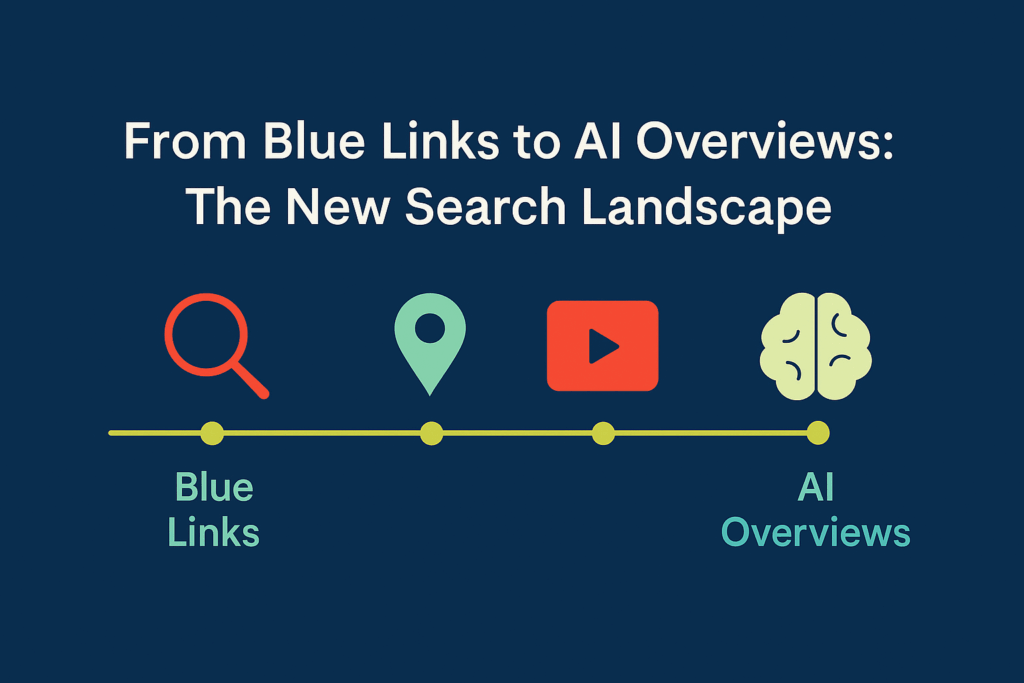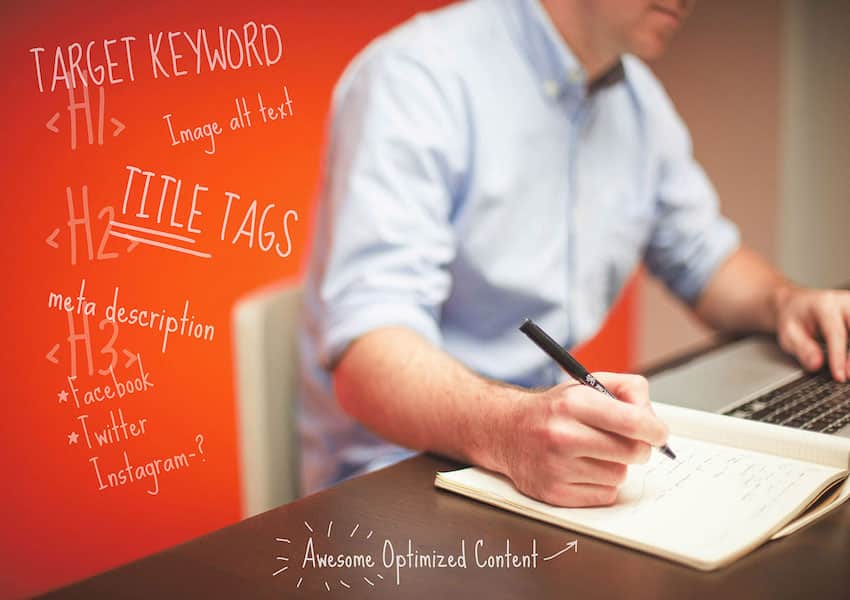The online search landscape is undergoing its most significant transformation yet, with Artificial Intelligence (AI) at the forefront. What began as “10 blue links” on a search engine results page (SERP) has evolved into a complex ecosystem featuring maps, videos, images, ads, and now, AI Overviews and AI Mode.
For businesses aiming to increase visibility and drive traffic, understanding these changes is paramount. Pure Visibility, with its expertise in increasing visibility across search, social, and AI, is here to help you adapt and thrive in this evolving digital world.
The AI Shift: Understanding Google’s Evolution
Google’s core business model is to keep users on its platform, primarily for ad revenue. To achieve this, Google continuously strives to improve the user experience by providing quick, direct answers to queries.
This intent has led to the development of features like AI Overviews – AI-generated summaries that appear directly on the SERP, often pushing organic results further down the page. More recently, Google has introduced AI Mode, powered by Gemini, offering a deeper, conversational search experience akin to ChatGPT, directly within google.com. While not yet defaulted for all users, there’s talk that this could become the standard Google search experience.
The rise of AI Overviews means fewer people are clicking through to websites, even though Google’s CEO notes an increase in overall search volume. This presents a new challenge: businesses are now not only competing with other companies but also with Google’s own AI for visibility and attention.

However, Google still maintains a staggering 93% market share in search, making it crucial to continue optimizing for its platform. Beyond Google, other AI platforms like ChatGPT, Perplexity, Claude, and Bing Copilot are also being used for discovery and product recommendations.
Adapting to the AI-Driven Search Era: The Core Principles of Visibility
The good news is that the fundamental principles of SEO remain incredibly relevant, even in an AI-dominated world.
Pure Visibility emphasizes three core pillars that Google and AI tools use to evaluate a website: Relevance, Authority, and Usability.

Here’s how to focus your efforts:
On-Page SEO: Mastering Relevance and User Intent
This involves everything on your website page that you can control, including content and keywords.
- Know Your Audience Intimately. This is your starting point. Define your target personas by understanding their need states, emotions, and challenges. The more intimately you understand their pain points, the better your content can connect and entice action. Consider what triggers them to search in the first place. Surveys and conversations with customers or sales teams can provide invaluable insights into the language they use to describe their problems. For instance, a person needing housing immediately has different needs and search terms than someone planning a future move.
- Strategic Keyword Research. Keywords are the bridge between your content and user search intent.
- Focus on long-tail keywords – longer, more specific phrases that clearly identify intent (e.g., “Nike women’s running shoes size nine in white under $100” instead of just “shoes”).
- While the volume may be lower, the likelihood of conversion is significantly higher.
- Tools like Answer the Public and Google’s “People Also Ask” feature can help you find these specific, related queries.
- Structure Your Content for Clarity (and AI).
- Title Tags & Meta Descriptions: These are your advertisements in search results. Include your primary keyword upfront in your title tag, and use the meta description to entice clicks.
- Heading Tags (H1, H2, H3): Organize your content like an outline, making it easy for both humans and AI to scan and understand. Use your main keywords and relevant variations within these headings.
- FAQs: Incorporate common questions (like those from “People Also Ask”) into dedicated FAQ sections on your pages.
- Optimized URLs: Keep them short, descriptive, and intuitive, reflecting the page’s content.
- Images & Internal Links: Optimize images with descriptive file names and “alt text” for accessibility and crawlability. Use internal links to guide users and search engines through your site, showcasing the depth of your content. Linking to external reputable sources also signals a healthy website to Google.
Off-Page SEO: Building Authority and Trust
This refers to anything off your website that influences your authority and visibility.
- Backlinks: Links from other reputable websites pointing to yours still act as powerful “votes of confidence” or trust signals for Google.
- Brand Mentions & Citations: Beyond links, unlinked mentions of your brand and listings in relevant local directories or associations (citations) significantly contribute to your authority and reputability. The authority and relevance of the source mentioning your brand are crucial; a mention from an industry leader holds more weight. Examples include Google Business Profile, Chambers of Commerce, or industry-specific associations.
- Beyond Google: Your Digital Footprint:
- Claim Social Handles: Even if not actively used, claiming your social media profiles with basic information signals presence to Google and AI platforms.
- Your Website as Home Base: Unlike social media or app stores, your website is an asset you largely control. It serves as your stable “home base” that AI models will scrape for information.
- Wikipedia & Reddit: If your business is newsworthy enough for a Wikipedia page, it can provide a massive boost in authority. Google has also partnered with Reddit to scrape its data, making engagement in relevant Reddit communities important for visibility to AI models.
Technical SEO: Ensuring Usability
This involves the behind-the-scenes aspects of your website that affect its performance and how search engines interact with it.
- Site Speed: How quickly your website loads on all devices (desktop, mobile) is critical for user experience and search engine ranking. Tools like Google Page Speed Insights can help you identify and fix loading issues.
- Crawlability: Ensure Google can easily navigate and index your site without encountering roadblocks or broken links. Tools like Google Search Console provide insights into how Google sees your site.
Leveraging AI for Optimization
AI itself can be a powerful ally in your SEO efforts.
- AI tools like ChatGPT can help you outline content, generate ideas, and suggest improvements based on current ranking trends. ChatGPT is considered the best all-around tool due to its capabilities and ability to be trained for specific projects and personas. Perplexity is good for search and research, similar to a Google alternative, and Gemini integrates well with Google products like Slides and Docs for analysis and summarization. Claude is also noted for creativity, coding, and writing.
- However, always remember that AI models base their responses on existing web data. While AI can streamline processes, remember to focus on your ideal users and the outcome you can provide. Don’t put all your eggs in one basket by relying solely on one platform. Be mindful of data privacy when using AI tools; avoid uploading sensitive or proprietary data, even with paid versions, as data leaks can occur.
The digital landscape is ever-changing, but by focusing on relevance, authority, and usability, grounded in a deep understanding of your audience, your business can effectively adapt to and thrive in the AI-driven search era.
Ready to Enhance Your Online Visibility?
Pure Visibility offers personalized consultations and custom training to help your business navigate these complex changes. Reach out to us to discuss how we can tailor a strategy to your unique needs.




